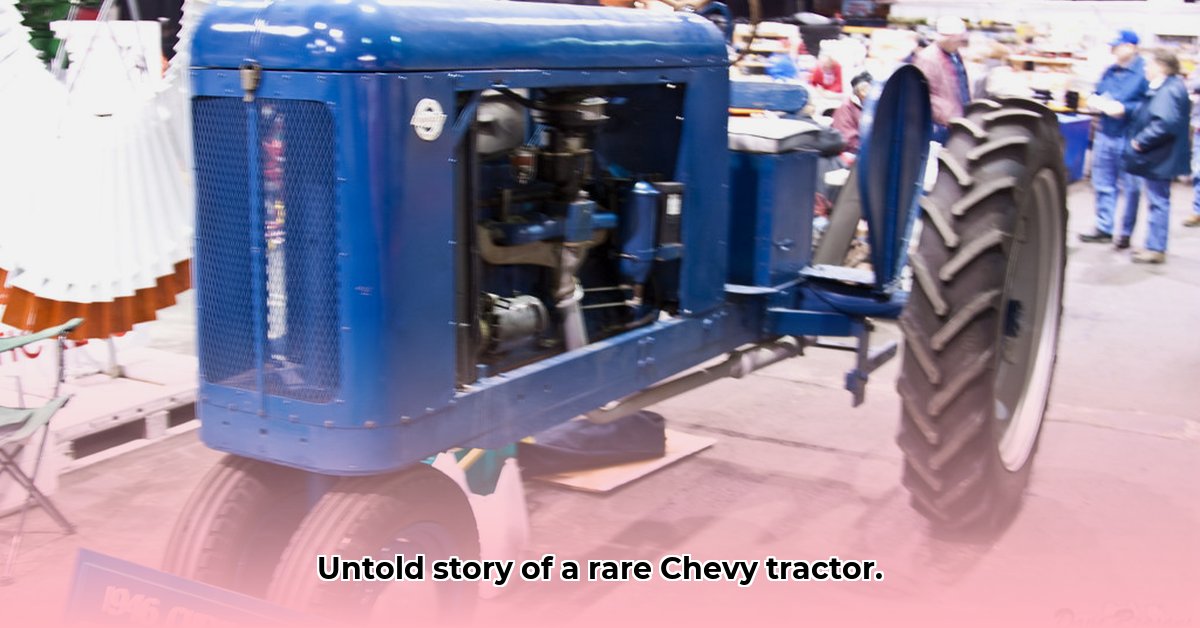
A Deaf Mechanic's Dream: Willie Nutter Jr. and His Chevy Tractor
Willie Nutter Jr. wasn't your average post-World War II American. Born deaf and mute, he communicated through hand gestures, yet possessed an uncanny mechanical aptitude that spoke volumes. In a time of rebuilding and burgeoning industrial innovation, Willie achieved something extraordinary: he built a fully functional tractor using repurposed parts from a Chevrolet truck. This wasn't a simple hobby project; it was a testament to his ingenuity and a remarkable, often-overlooked, chapter in American automotive history. This inventive machine, cobbled together from readily available materials, represents a compelling example of resourcefulness and a unique approach to engineering. How did he manage such a feat? And why did this innovative creation ultimately fail to gain traction? For more details on this amazing feat of engineering, visit the Chevy Tractor Project.
The Ingenious "Franken-tractor": Design and Innovation
At the heart of Nutter's Chevy tractor was a robust Chevrolet 216 cubic inch straight-six engine—a dependable workhorse readily available in the postwar era. This was cleverly paired with a four-speed truck transmission, providing functional gearing appropriate for agricultural tasks. But what truly distinguished this creation wasn't advanced technology but Nutter's sheer inventiveness. He saw potential where others saw limitations; he found solutions where others saw obstacles. The chassis, repurposed from a Chevy truck, showcased an incredibly cost-effective approach to engineering.
However, this wasn't a modern, state-of-the-art tractor. Crucially, it lacked key farming features. There was no power take-off (PTO) (a mechanism that transmits power from the tractor's engine to external equipment), no hydraulics, and no simple belt pulley – all vital components for efficient farm work. Were these omissions design flaws or simply limitations of an early prototype? This question remains open to debate, but these absences undoubtedly contributed to the tractor's limited functionality.
The Untold Story: Why the Fields Remained Untilled
Despite its functionality, Nutter's Chevy tractor never progressed beyond the prototype stage. Several factors likely contributed to its failure. Post-war America saw a surge in automotive demand, and General Motors (GM), understandably, prioritized car production. Nutter’s project, although impressive, was simply out of sync with GM’s priorities. Furthermore, the absence of essential features—the very features making other tractors competitive—were significant shortcomings. The conversion of a truck chassis also likely presented unforeseen engineering challenges. Consequently, this unique machine became a fascinating footnote in history – a testament to mechanical artistry that never reached the marketplace. Did the market simply not need this type of tractor? Perhaps future historians will delve deeper into the question of if a niche existed for Nutter's tractor.
Lessons Learned: Innovation, Market Forces, and Timing
Nutter’s story is more than just an unrealized dream; it's a valuable case study in innovation, market realities, and the importance of timing. It demonstrates how even the most brilliant inventions can be thwarted by external forces. It underscores the critical need for thorough market research and an understanding of end-user requirements before launching any product. Nutter's innovation was undeniable, but he lacked the resources to compete in an established market. His legacy, however, transcends failure; it celebrates a passionate individual pursuing his vision. Could this scenario have been avoided with a better understanding of market forces?
A Modern-Day Revival?
What if GM had backed Nutter's design? Could a simplified, affordable tractor have found a market niche? In today's world, particularly in developing nations, there’s a potential demand for such a machine. Some experts believe that a modern iteration of Nutter's tractor design, adapted to contemporary needs and manufactured using advanced techniques, might find success. The lack of advanced features might not be as significant in more basic farming contexts. The Chevy tractor's story serves as both a cautionary tale and an inspiration, showcasing the interplay of ingenuity, market forces, and the importance of timing.
Building a Tractor from Repurposed Parts: A Practical Guide
While Nutter's creation highlights the challenges, it also demonstrates the possibility of such a project. However, careful planning and realistic expectations are paramount.
- Needs Assessment: Define the tractor's function. What tasks will it execute? This will drive part selection.
- Component Selection: Prioritize durability. Parts from heavy-duty vehicles are better suited.
- Careful Modification: Adaptation demands precision. Improper modifications compromise functionality and safety.
- Safety First: Employ appropriate safety equipment. Consult a qualified mechanic.
- Realistic Expectations: A DIY tractor will likely lack the power and reliability of commercial tractors.
Key Takeaways:
- Repurposing car parts for tractor construction is feasible, but challenging.
- Extensive mechanical expertise is indispensable.
- Durability and reliability will significantly differ from commercial models.
- A comprehensive cost-benefit analysis is crucial before undertaking the project.
- Safety must remain the top priority throughout the entire process.